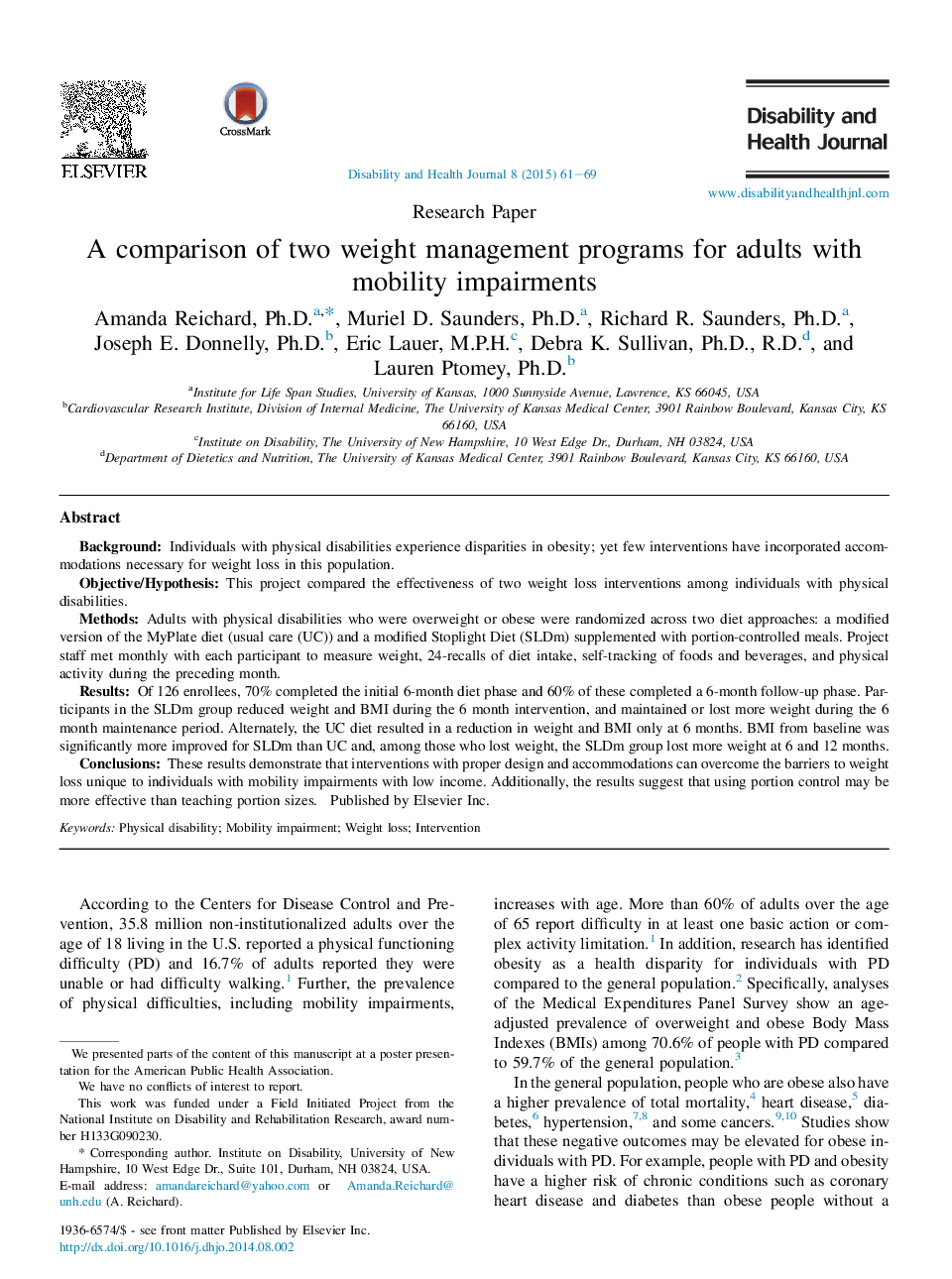| Article ID | Journal | Published Year | Pages | File Type |
|---|---|---|---|---|
| 4197182 | Disability and Health Journal | 2015 | 9 Pages |
BackgroundIndividuals with physical disabilities experience disparities in obesity; yet few interventions have incorporated accommodations necessary for weight loss in this population.Objective/HypothesisThis project compared the effectiveness of two weight loss interventions among individuals with physical disabilities.MethodsAdults with physical disabilities who were overweight or obese were randomized across two diet approaches: a modified version of the MyPlate diet (usual care (UC)) and a modified Stoplight Diet (SLDm) supplemented with portion-controlled meals. Project staff met monthly with each participant to measure weight, 24-recalls of diet intake, self-tracking of foods and beverages, and physical activity during the preceding month.ResultsOf 126 enrollees, 70% completed the initial 6-month diet phase and 60% of these completed a 6-month follow-up phase. Participants in the SLDm group reduced weight and BMI during the 6 month intervention, and maintained or lost more weight during the 6 month maintenance period. Alternately, the UC diet resulted in a reduction in weight and BMI only at 6 months. BMI from baseline was significantly more improved for SLDm than UC and, among those who lost weight, the SLDm group lost more weight at 6 and 12 months.ConclusionsThese results demonstrate that interventions with proper design and accommodations can overcome the barriers to weight loss unique to individuals with mobility impairments with low income. Additionally, the results suggest that using portion control may be more effective than teaching portion sizes.
